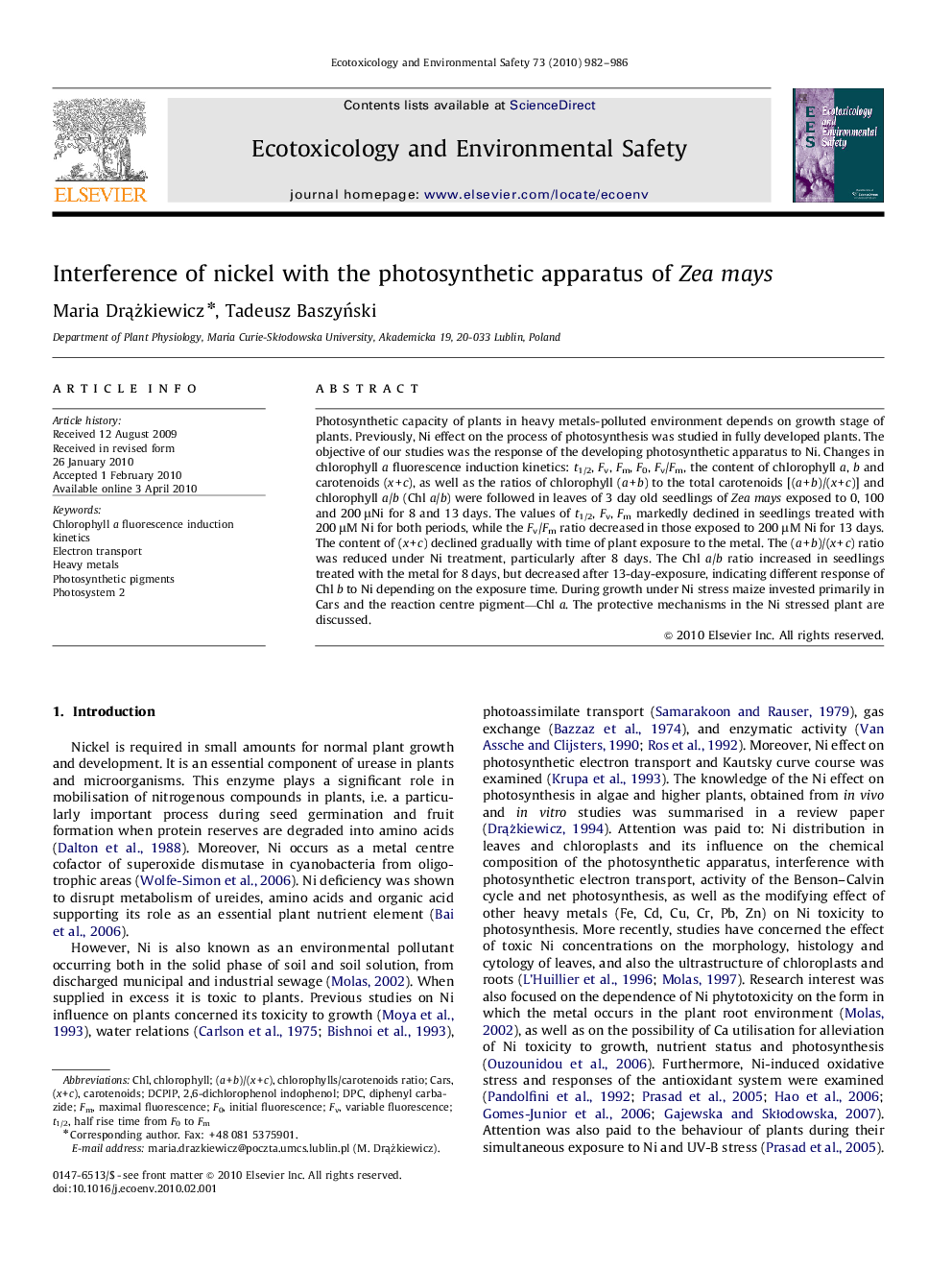| Article ID | Journal | Published Year | Pages | File Type |
|---|---|---|---|---|
| 4421678 | Ecotoxicology and Environmental Safety | 2010 | 5 Pages |
Photosynthetic capacity of plants in heavy metals-polluted environment depends on growth stage of plants. Previously, Ni effect on the process of photosynthesis was studied in fully developed plants. The objective of our studies was the response of the developing photosynthetic apparatus to Ni. Changes in chlorophyll a fluorescence induction kinetics: t1/2, Fv, Fm, F0, Fv/Fm, the content of chlorophyll a, b and carotenoids (x+c), as well as the ratios of chlorophyll (a+b) to the total carotenoids [(a+b)/(x+c)] and chlorophyll a/b (Chl a/b) were followed in leaves of 3 day old seedlings of Zea mays exposed to 0, 100 and 200 μNi for 8 and 13 days. The values of t1/2, Fv, Fm markedly declined in seedlings treated with 200 μM Ni for both periods, while the Fv/Fm ratio decreased in those exposed to 200 μM Ni for 13 days. The content of (x+c) declined gradually with time of plant exposure to the metal. The (a+b)/(x+c) ratio was reduced under Ni treatment, particularly after 8 days. The Chl a/b ratio increased in seedlings treated with the metal for 8 days, but decreased after 13-day-exposure, indicating different response of Chl b to Ni depending on the exposure time. During growth under Ni stress maize invested primarily in Cars and the reaction centre pigment—Chl a. The protective mechanisms in the Ni stressed plant are discussed.
